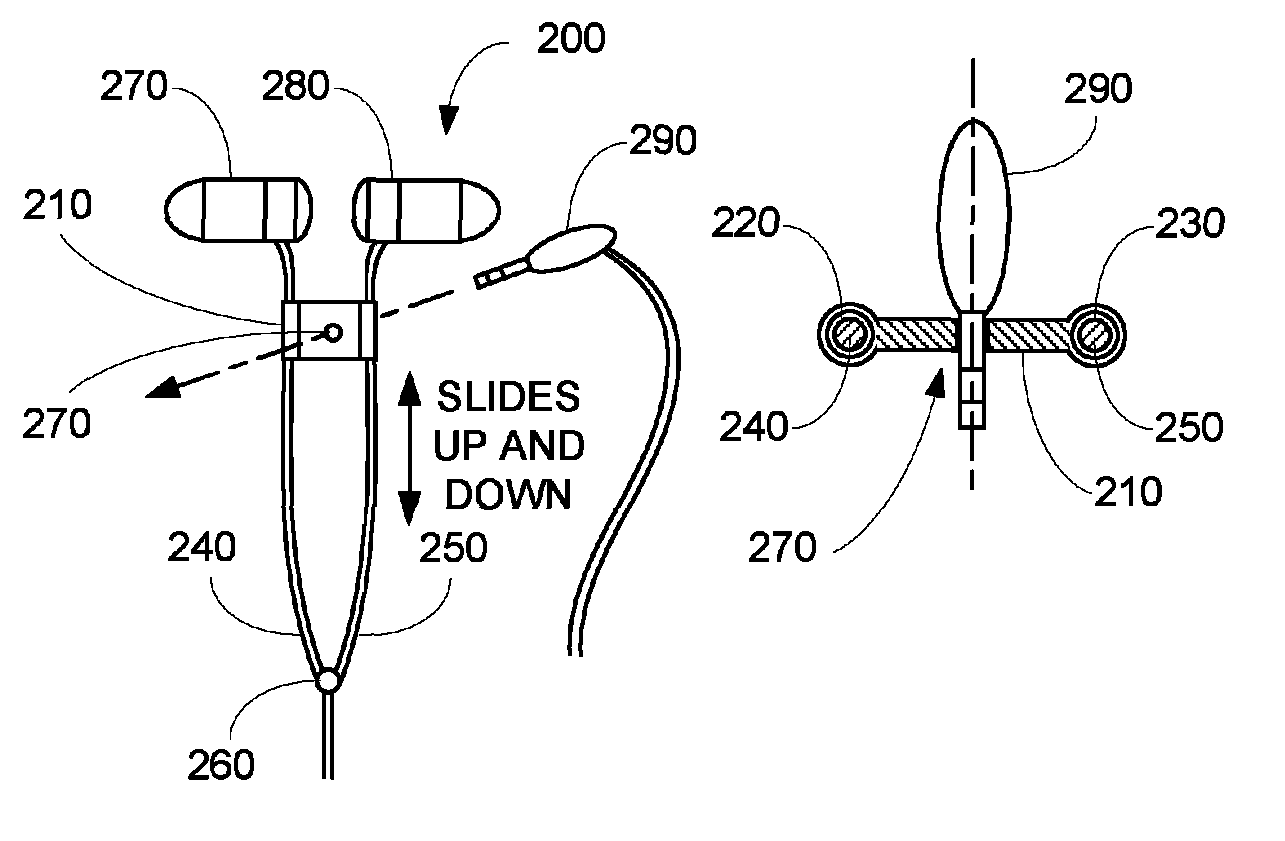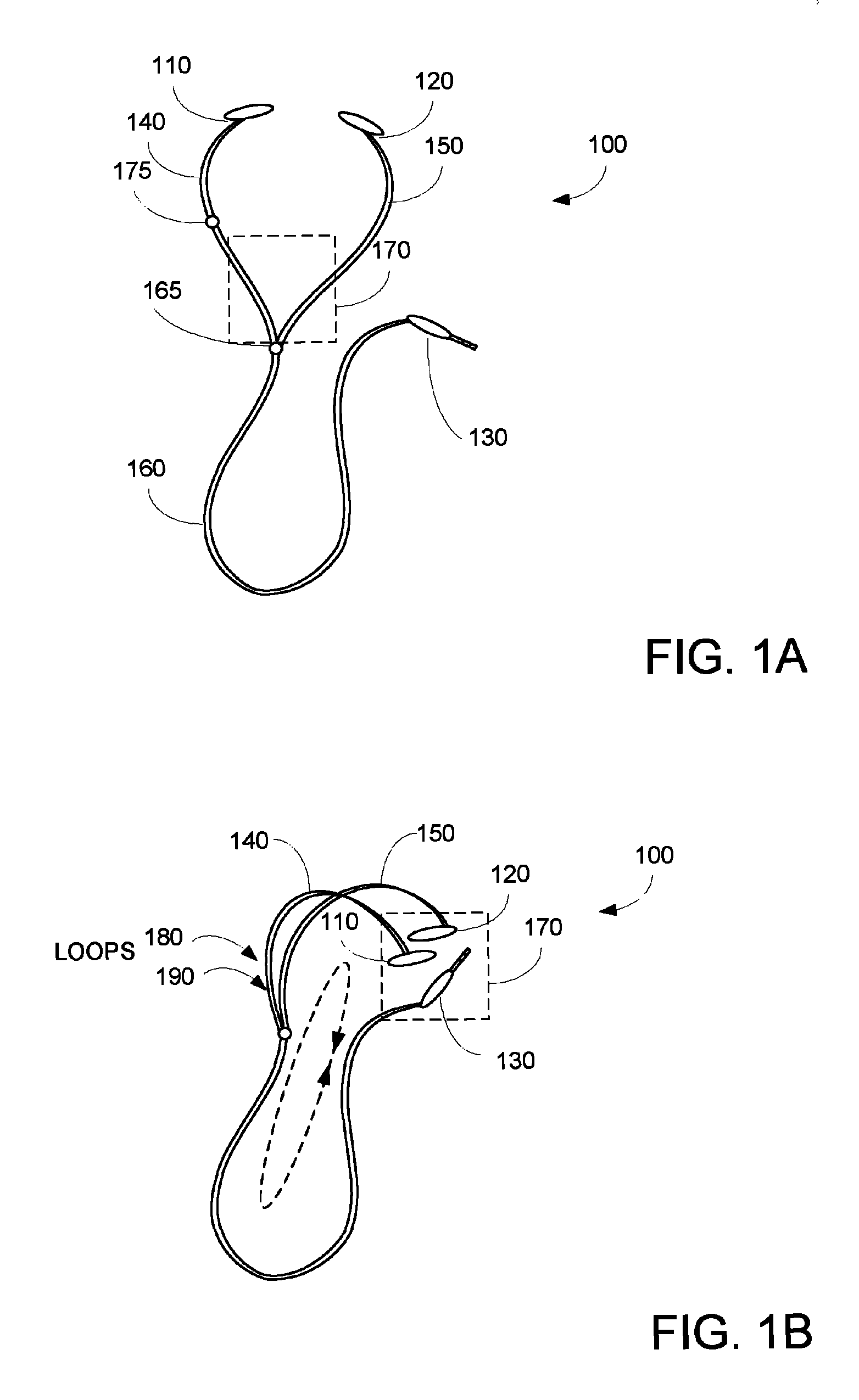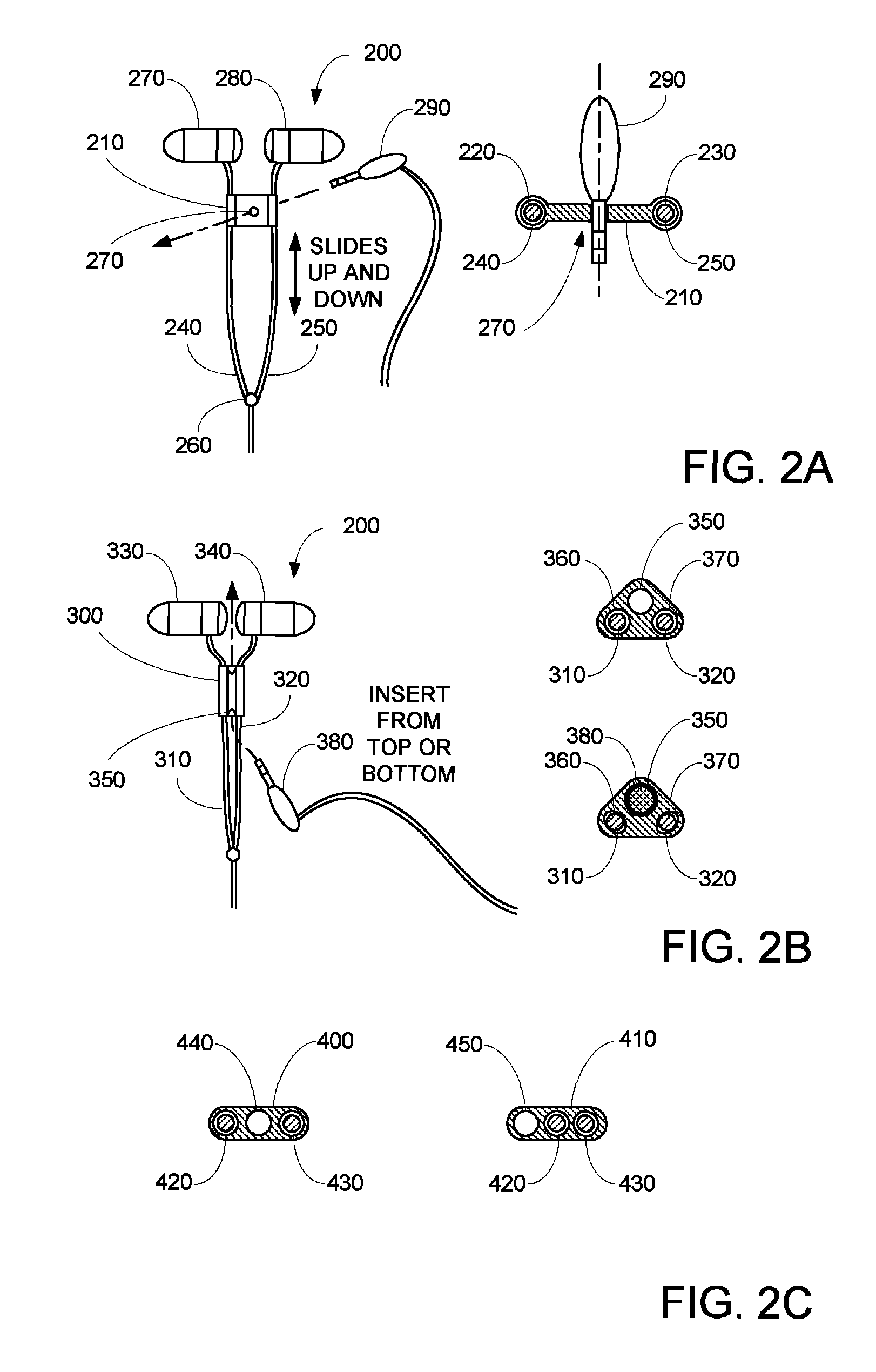The inventors believe that thick headphone cords (wires and insulation) are designed to be stiff so that it is difficult for one part of the cord to get tangled with another part of the cord.
Drawbacks to such approaches are believed to include that the headphone cords may be so stiff that is makes the headphones uncomfortable for a user to wear.
For example, when the user moves a portable
music player from their jeans pocket to their shirt pocket, the stiff cables may undesirably curve and protrude into the user's face, protrude out of a jacket, or the like.
Additionally, the headphones cannot be discreetly worn.
As another drawback, from a manufacturer's point of view, it is believed that increasing the wire thickness, insulation thickness, etc, undesirably drives up the material cost of such headphones.
Drawbacks to such approaches are believed to include that tangling of headphones is still a problem.
Further, these wire pulls tend to slide-away from the headphones (allowing the headphones to come apart) with the same amount of force as it takes for the user to slide the wire
pull up towards the headphones.
Accordingly, such wire pulls often slide away from the headphones and thus fail to even keep the ear buds together.
Yet another set of drawbacks includes that some headphones include microphones positioned near the user's mouth, along the length of the headphone wire that interferes with the wire pull.
If the wire pull is located above where the microphones are typically located (by the user's jaw), there is not enough free headphone wire to reach the user's ears.
Further, if the wire pull is designed to be attached and detached from one of the headphone wires every time the headphones are to be stored, it would require patience and skill for the user just to store the headphones.
Drawbacks to such techniques include that the headphone wire within the
spooling mechanism is often placed under great repetitive stresses, is often stored in very stressful positions.
These sharp wire bends potentially cause damage to the wire.
Further, as the user typically grips the ear buds and audio input jack and pulls to unwind the wire, this additional stress can potentially cause the wire connecting the ear buds or the input jack to break.
Yet another drawback is that such
spooling mechanisms are bulky and unattractive.
For example, some
spooling mechanisms are bulky and when the user turns her head, the
inertia of the spooling mechanism will cause the headphone cables to swing around, and pull an ear
bud out from the user's ears.
Additional drawbacks include that such spooling mechanisms are sometimes over an inch in
diameter and a quarter inch in thickness.
Accordingly, when the headphones are in use, the large spool unattractively sits prominently in the middle of the user's chest.
Drawbacks to such an approach include that it requires the user to keep their headphones in a bulky storage case until they are
ready to use their headphones, As users tend to want to travel “light,” it is believed that carrying such an
external storage case is highly undesirable.
Further, similar to the drawbacks described above, such methods tend to generate great stress in the wires attached to the ear buds and / or in the input jack, and / or with repeated winding, the headphone wires are constantly subject to wire stretching.
Additionally, such approaches require the user to waste time on a
time consuming wind and unwind “routine” every time the user wants to use their headphones.
Drawbacks to such methods are believed to be even more significant than the ones described above.
As this is repeated for the length of the headphone wire, very many places of the headphone wire are subject to pre-mature wire fatigue and breaking.
Other drawbacks include that the input jack and / or the ear buds are repeatedly drawn tightly within the “
tail” or the “eye” of the fish as the user winds the headphone wire.
This may undesirably cause a break in the wire near or within the input jack and / or the ear buds.
With repeated use, the constantly stretched wires tend to prematurely break.
Further, as described above, this winding and unwinding routine is very
time consuming.
Drawbacks to such methods include that the winding process is very
time consuming to perform when packing up their headphones.
Another drawback is that it is very time consuming for a user to unwind the wires when they want to listen to music or talk on a phone.
Additionally, the techniques require great discipline for the user to maintain such a routine.
Yet another drawback, as discussed in the techniques above, includes that it tends to place great stress upon the headphone wires.
Accordingly, it is believed that such repetitive stresses tend to greatly reduce the lifespan of headphones.
The problems described above for the various methods for reducing headphone tangling are magnified when the headphones include a
microphone, e.g. a telephone
headset.
However, using such techniques, when answering a
telephone call in a hands-free configuration, the user cannot stop to unwind, unspool, or untangle their headphone wires and cannot divert her attention from driving to do so, even at a stop light.
Further, after completing such calls, if the user is driving, for example, the user also does not have time and cannot devote her attention to meticulously re-winding their headphones back into their cases.
Of course other current methods for conducting hands-free telephone calls are known, such as
Bluetooth earpieces, and speakerphones, however, each of these have their drawbacks (e.g.
RF radiation next to the brain, losing the
Bluetooth earpiece, suppressing
external noise, etc.).
 Login to View More
Login to View More  Login to View More
Login to View More 


